Pivot doors – everything you need to know about this innovative design
Pivot doors are growing in popularity and is one way to make a lasting impression on your home design
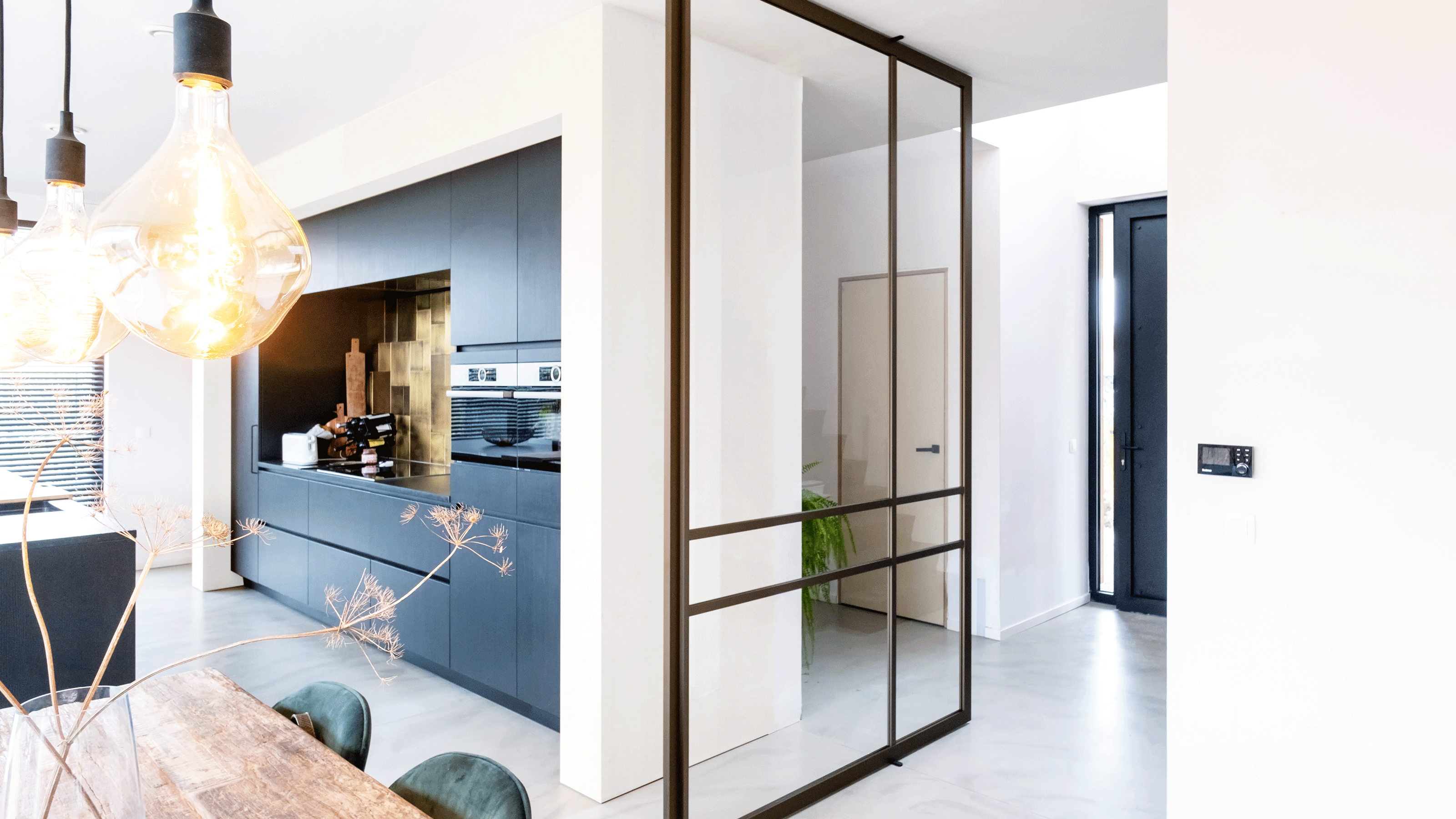

Streamlined design, super-slim profiles, and modern framing materials are just a few of the features that give pivot doors the edge over more conventional options. Often specified as external entrances, especially for contemporary urban extensions, pivot systems offer a striking solution for your interiors, too. ‘They allow for higher and wider doors than traditional setups, offer something different to sliders or folding doors, and they give more flexibility in terms of where the door opens and closes to,’ says Daniel Woolfson, architect and director at The Dhaus Company.
There’s plenty of options for materials, including wood, metal, and glass. Glazed doors with a metal frame (usually aluminum) work beautifully as internal room dividers, as well as stylish front door ideas, allowing light to flow freely from one room to the next. Here are five ideas on how to incorporate pivot doors into your scheme...
What is the purpose of a pivot door?
Rather than being hinged to an adjacent frame at the side as the door leaf swings open, pivot doors rotate around a mechanism that’s positioned at the top and bottom of the door panel. It’s possible to choose how far along the width of the door panel the pivot hinges are placed. ‘As the door rotates open, depending on the position of the pivots, this can create one opening or two if the pivot is closer to the center of the pane,’ says Shannon Normoyle, digital marketing executive at IQ Glass.
1. Use an aluminium frame to maximise the light you let through

Glazed doors with a metal frame (usually aluminum) work beautifully as internal room dividers, allowing light to flow freely from one room to the next. ‘If privacy is an issue the glass can be decorative, such as sandblasted, to block visibility without blocking light,’ says Shannon. Aluminum can also be powder-coated and finished in an RAL color of your choice to infuse your design scheme with extra personality.
Featuring a slim aluminum frame, this ADL pivot door minimizes framing and maximizes the glazed area, ensuring as much light as possible shines through the opening.
As well as the inherent strength of the metal, which allows the streamlined frame to support a large pane of glass, aluminum was chosen for its lightweight and low-maintenance properties. Incorporating the pivot hinges at the middle of the panel has transformed the door into a wow factor design feature, especially when paired with the seamless, level threshold of the concrete floor beneath.
2. Create zones in an open-plan space
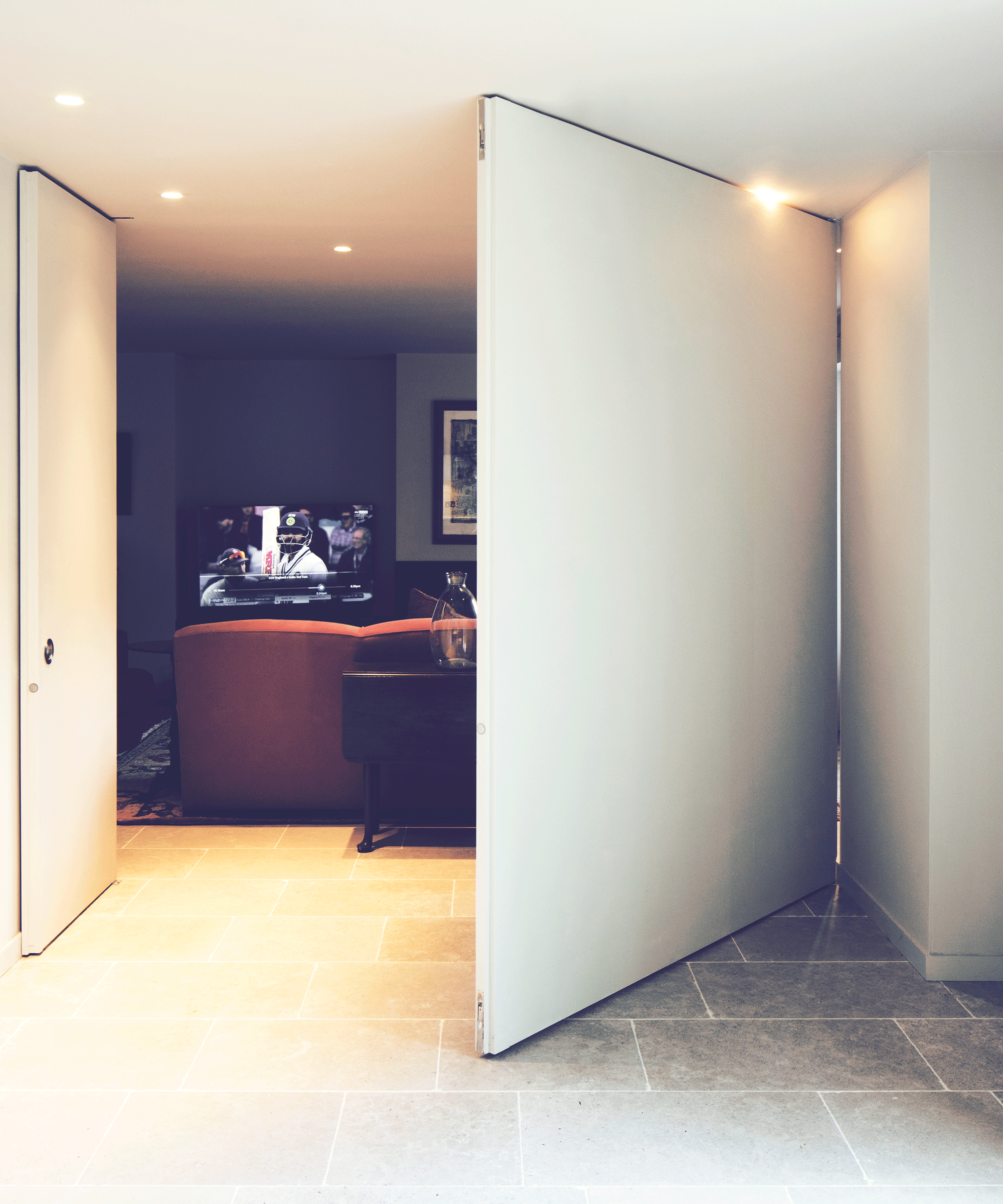
A pivot door was chosen as a flexible solution to divide the open plan kitchen and living room in this Victorian terraced house extension. Most of the time the door is fully open, allowing for a seamless transition between the two zones. The door also can be drawn back to create a partition between the two zones when required – a conventional two-door regular hinged setup would not have created the same effect. The panel is formed from a steel frame topped with a plywood sheath, featuring a white stained veneer finish.
The Livingetc newsletters are your inside source for what’s shaping interiors now - and what’s next. Discover trend forecasts, smart style ideas, and curated shopping inspiration that brings design to life. Subscribe today and stay ahead of the curve.
3. Pair steel and glass for a modern industrial look
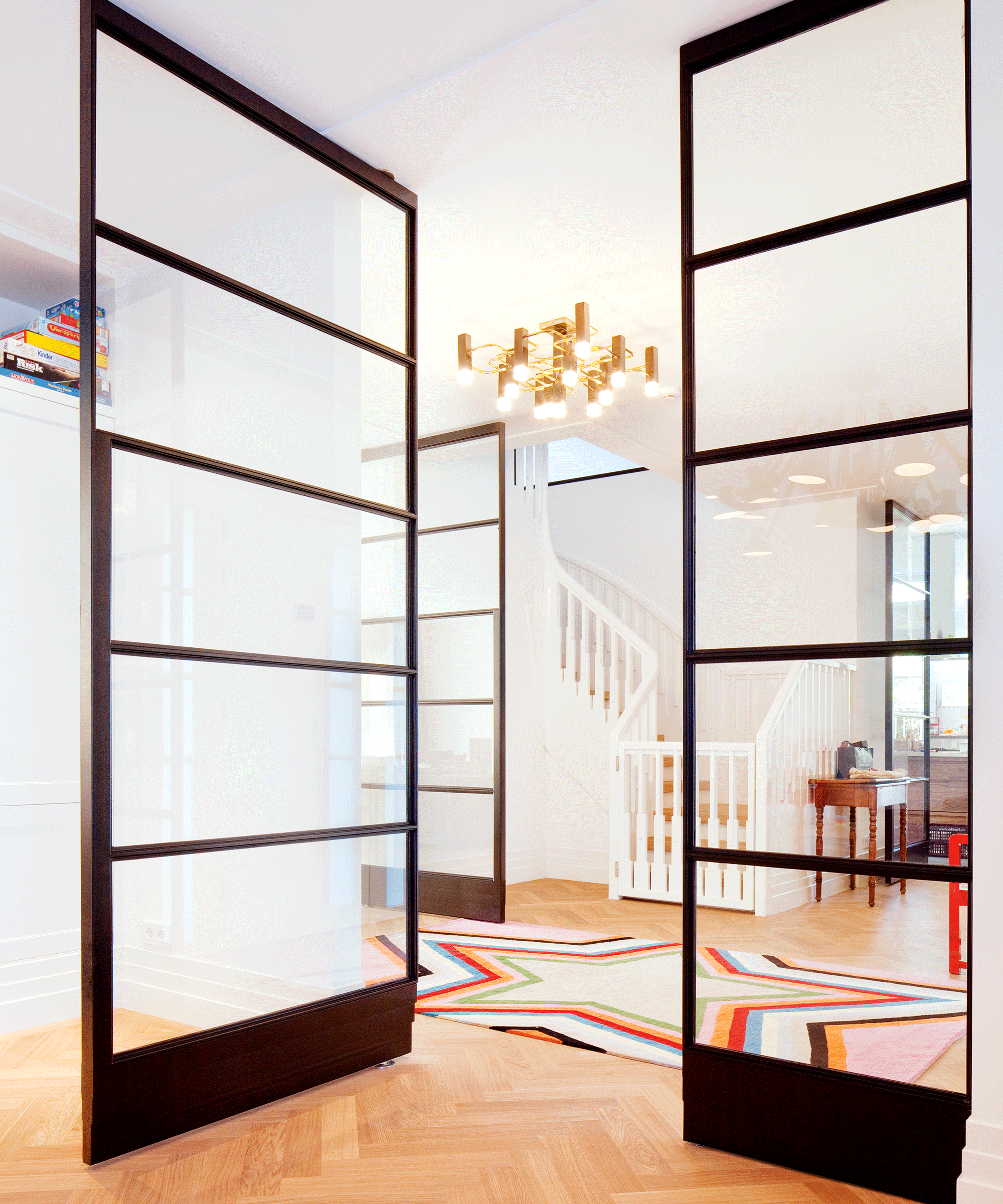
In this urban home, a steel-frame pivot door set has been paired with glass to create a contemporary, industrial look. In addition to its aesthetic advantages, steel is incredibly strong, which allows for slim metal profiles to maximize the areas of glass in between.
FritsJurgens’s self-closing pivot hinge System M has been installed here. The hardware is fully integrated into the top and bottom of the door, so only a small floor plate is visible. This type of hinge allows the door to hold open at positions of 0°, 90° and -90°, softly self-closing from an angle of 125° to -125°.
4. Choose bronze for a warm and powerful finish
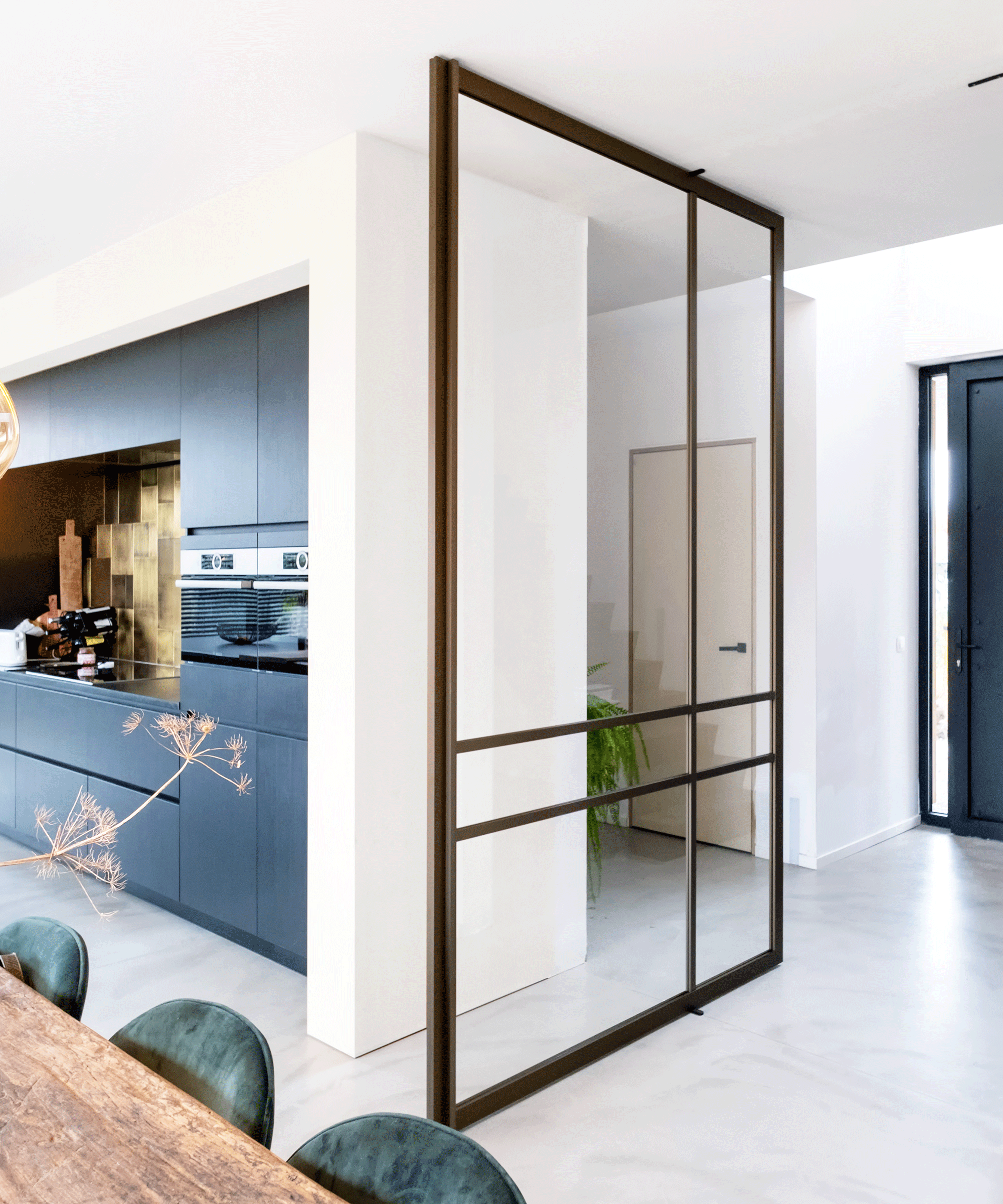
Comprising a strong anodized aluminum frame with a bronze finish, Portapivot’s 5730 design makes a powerful statement. Made to bespoke dimensions, the panel can be opened both ways, making it a highly flexible solution for the wide transition between this home’s entrance hallway and kitchen diner. Priced from £2600, the setup features invisible pivot hinges for a streamlined aesthetic. The frame is designed to be mounted atop a finished floor surface, without the need for any additional built-in fixtures.
5. Introduce wood to bring in character and texture
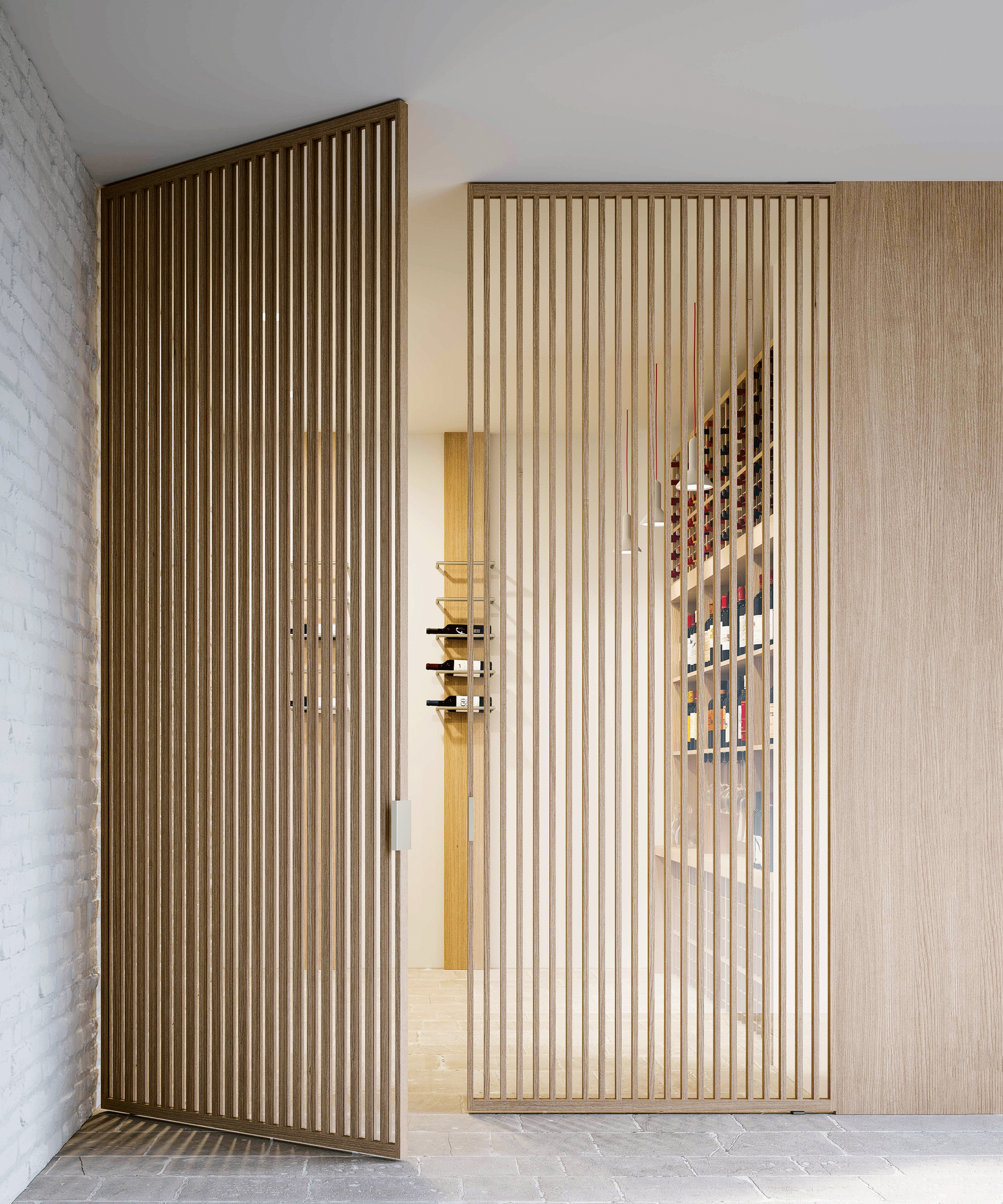
Wood is an excellent option if you’re looking to add character and texture. A lacquer finish will produce a sheen, while an oil finish will result in a richer shade. ‘There’s also more room for movement, in terms of the tolerances vs expansion due to moisture and temperature changes, as pivot doors have a gap around the edge anyway,’ says Koen Dries from Portapivot.
This Vertical Lines design establishes a stunning focal point at the entrance to this property’s wine storage. The 18mm-wide aluminum profiles are finished with Siberian oak and glazed with 6mm toughened glass, allowing light to shine through the opening even when the doors are closed. The timber finish was chosen for its warmth, forming a striking counterpoint against the texture of the exposed brick wall and stone floor tiles. Hidden behind the timber finish, the innate strength of the aluminum is what allows the ultra-slim profiles to be achieved.
How much do pivot doors cost?
As many installations are bespoke, the cost for your door system will depend on its size, design, and material. As a minimum, expect to budget around £2,500. ‘Always check on the lead time,’ says Daniel from The Dhaus Company. ‘Bespoke doors can take between eight and 12 weeks, which needs to be built into your works program..’
Can I install pivot doors myself?
Fitting a pivot door is a specialist job, so don’t attempt to install the system yourself. ‘The walls, floor, and ceiling should be fully prepared – they need to be absolutely straight and level,’ says Andrius Lazauskas, director at Surbiton Glass. 'It is important you use a professional.'
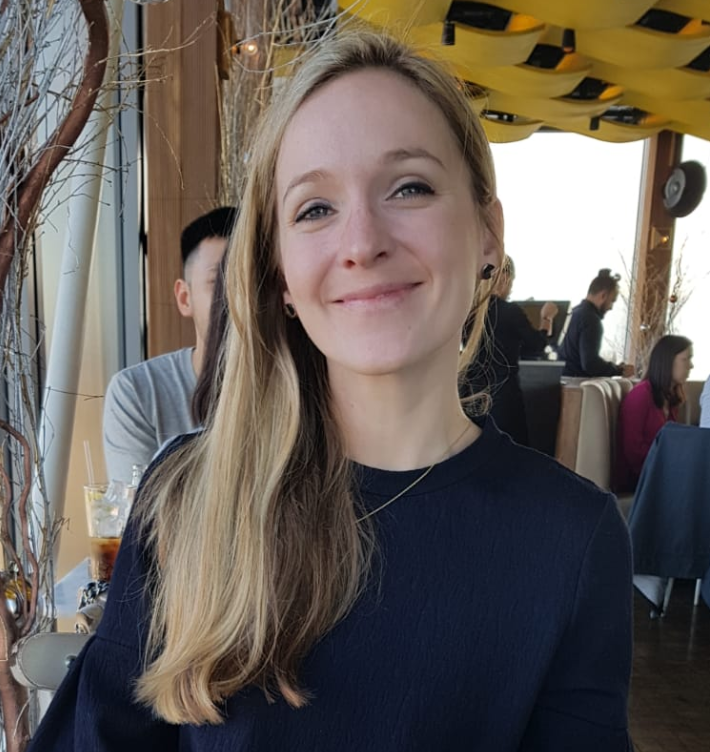
After starting my journalism career at a luxury property magazine in Bangkok, I re-located to London where I started out as a sub-editor and features writer. I later became the features editor of a popular self-build and renovation magazine, where I delved into the world of structural systems, eco tech and smart homes. I went freelance in 2017 to pursue my dream of becoming a yoga teacher, but I still write for numerous titles in the homes and interiors sector, including Grand Designs, Ideal Home, Livingetc, Homebuilding & Renovating and Build It. I write a range of articles, from design-focused features to real life case studies.